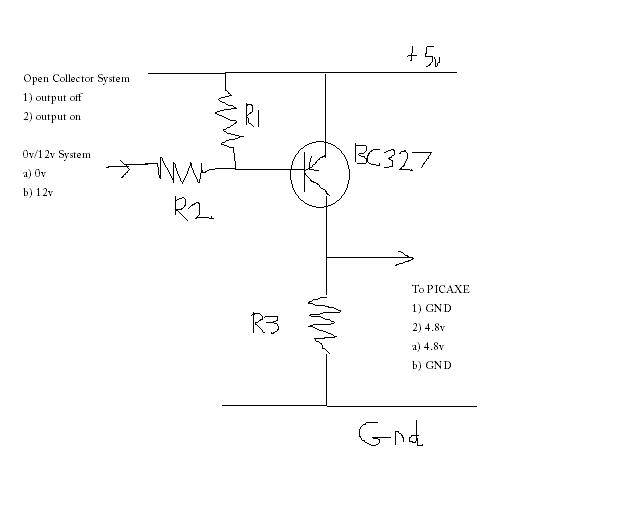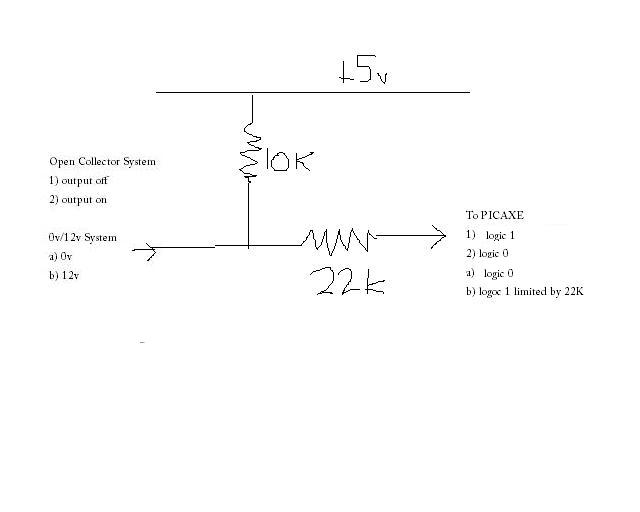(well not exactly at the same time!)
I'm after a very simple (i.e. elegant) input circuit that allows me to monitor either:
- an external system switching an open-collector output
- an external system providing a 0 or 12v input signal.
...without changing the input components i.e. my system is flexible in that it doesn't care which is plugged in.
The obvious for the open collector is just a pullup to my +5v supply
The obvious for the 0/+12v is either:
- potential divider
- inline resistor and zener
So can I just combine them to...
I'm after a very simple (i.e. elegant) input circuit that allows me to monitor either:
- an external system switching an open-collector output
- an external system providing a 0 or 12v input signal.
...without changing the input components i.e. my system is flexible in that it doesn't care which is plugged in.
The obvious for the open collector is just a pullup to my +5v supply
The obvious for the 0/+12v is either:
- potential divider
- inline resistor and zener
So can I just combine them to...
Code:
+5v
|
|
1K
|
|
input----100R-----------PICAXE
|
|
5V1 Zener
|
|
GND
Last edited:


